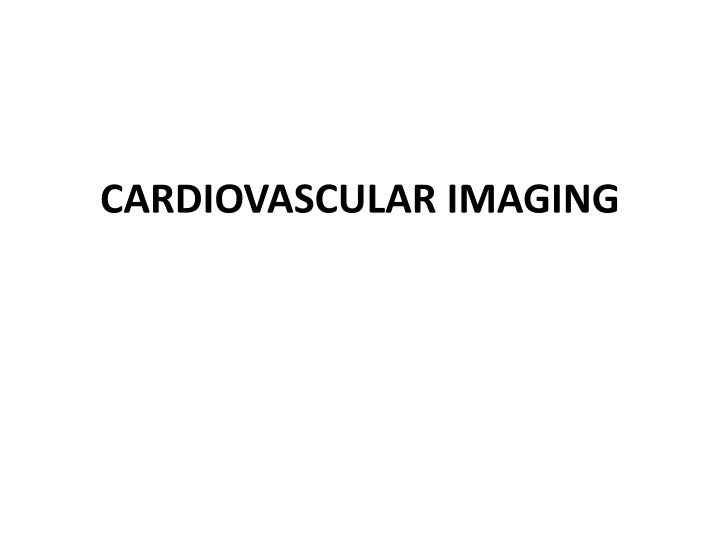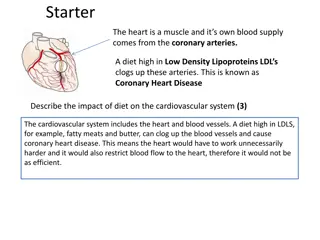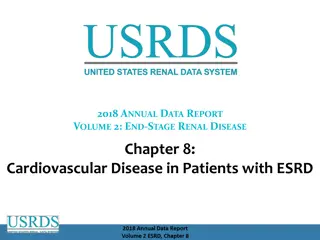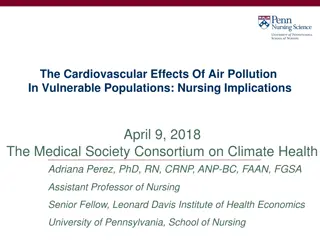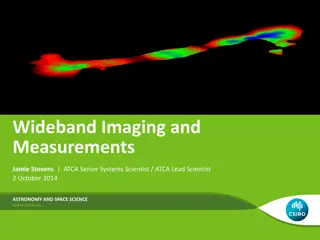Comprehensive Guide to Cardiovascular Imaging and Anatomy
Explore a detailed collection of images showcasing cardiovascular imaging, radiological anatomy of the chest, vascular anatomy, and pulmonary conditions like embolism. Discover the gold standard for diagnosing pulmonary embolism, as well as CT angiograms and aortic arch anatomy. Engage with visuals illustrating aortic aneurysms, heart and vessels, and more in this informative resource.
Download Presentation

Please find below an Image/Link to download the presentation.
The content on the website is provided AS IS for your information and personal use only. It may not be sold, licensed, or shared on other websites without obtaining consent from the author.If you encounter any issues during the download, it is possible that the publisher has removed the file from their server.
You are allowed to download the files provided on this website for personal or commercial use, subject to the condition that they are used lawfully. All files are the property of their respective owners.
The content on the website is provided AS IS for your information and personal use only. It may not be sold, licensed, or shared on other websites without obtaining consent from the author.
E N D
Presentation Transcript
Radiological Anatomy of the Chest Lung Window Sagittal Axial Coronal Mediastinal Window
Vascular anatomy of the chest
Vascular anatomy of the chest
Vascular anatomy of the chest
THE GOLD STANDARD FOR DIAGNOSIS OF PE IS CTA
CTA (Coronal Reconstruction) Embolus in left main pulmonary artery Embolus in descending right pulmonary artery NORMAL HOMOGENOUS FILLING OF THE VESSLES
AORTIC ARCH ANATOMY KKUH
The Aortic arch/great vessels Man s Anatomy by Tobias & Arnold
Aortic aneurysm Aortic knob/knuckle
Heart and Vessels Cardiomegaly plus early Congestive Heart Failure (CHF) Key: 1. Inferior vena cava (IVC) 2. Superior vena cava (SVC) *3. Azygos vein 4. Carina 5 7 7 7 7 2 5. Trachea 4 6. Right main stem bronchus 3 7. Prominent pulmonary vessels Any and or all heart chambers may enlarge when the heart becomes diseased. Cardiomegaly = a big heart. A patient s heart enlarges due to a number of diseases e.g. valve disease, high blood pressure, congestive heart failure. If the heart fails, the lung often become congested. Early on the pulmonary vessels appear more prominent as in this case. More advanced failure can result in a condition of pulmonary edema which is fluid flooding into the alveoli of the lungs causing the patient marked shortness of breath. 1
One of the easiest observations to make is something you already know: the cardio-thoracic ratio which is the widest diameter of the heart compared to the widest internal diameter of the rib cage Cardio-thoracic Ratio <50%
Sometimes, CTR is more than 50% But Heart is Normal Extracardiac causes of cardiac enlargement Portable AP films Obesity Pregnant Ascites Straight back syndrome Pectus excavatum
>50% Here is a heart that is larger than 50% of the cardiothoracic ratio, but it is still a normal heart. This is because there is an extracardiac cause for the apparent cardiomegaly. On the lateral film, the arrows point to the inward displacement of the lower sternum in a pectus excavatum deformity.
Sometimes, CTR is less than 50% But Heart is Abnormal Obstruction to outflow of the ventricles Ventricular hypertrophy Must look at cardiac contours
<50% Here is an example of a heart which is less than 50% of the CTR in which the heart is still abnormal. This is recognizable because there is an abnormal contour to the heart (arrows).
Anatomy on Normal Chest X-Ray Heart borders and chambers of the heart on PA and lateral views.
The Cardiac Contours Aortic knob Ascending Aorta Main pulmonary artery Double density of LA enlargement Indentation for LA Right atrium Left ventricle There are 7 contours to the heart in the frontal projection in this system.
The Cardiac Contours Aortic knob Ascending Aorta Main pulmonary artery Double density of LA enlargement Indentation for LA Right atrium Left ventricle But only the top five are really important in making a diagnosis.
Ascending Aorta Low density, almost straight edge represents size of ascending aorta
Ascending Aorta Prominent Small
Aortic Knob 42mm Enlarged with: Increased pressure Increased flow Changes in aortic wall
Main Pulmonary Artery Important The next bump down is the main pulmonary artery and is the keystone of this system.
Finding the Main Pulmonary Artery
Finding the Main Pulmonary Artery Adjacent to left pulmonary artery We can measure the main pulmonary artery . . .
Left atrial enlargement Concavity where L atrium will appear on left side when enlarged
The Pulmonary Vasculature
Five States of the Pulmonary Vasculature Normal Pulmonary venous hypertension Pulmonary arterial hypertension Increased flow Decreased flow
What to Evaluate 2 1 2 3
2. Normal Distribution of Flow Upper Versus Lower Lobes In erect position, blood flow to bases > than flow to apices Size of vessels at bases is normally > than size of vessels at apex You can t measure size of vessels at the left base because the heart obscures them
3. Normal Distribution of Flow Central versus peripheral Central vessels give rise to progressively smaller peripheral branches Normal tapering of vessels from central to peripheral
Normal Vasculature - review 2 RDPA < 17 mm in diameter Gradual tapering of vessels from central to peripheral 1 3 Lower lobe vessels larger than upper lobe vessels 2
Venous Hypertension RDPA usually > 17 mm Upper lobe vessels equal to or larger than size of lower lobe vessels = Cephalization
The Pulmonary Vasculature Normal Pulmonary venous hypertension Pulmonary arterial hypertension Increased flow Decreased flow - mostly unrecognizable even when it is present
CHF KKUH
CARDIAC CT FOR THE HEART AND CRONARY VESSLES
PERICARDIUM PERICARDIUM AXIAL SAGITTAL SEPTUM CONTRAST CONTRAST MYOCARDIUM
Maximum Intensity Projection Soft Plaque in Proximal LAD PLAQUE NORMAL NARROWED LUMEN
